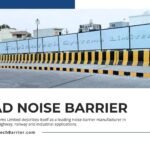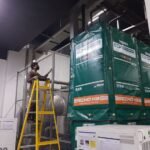![]()
Frequently Asked Questions (FAQ) | Noise Barrier

Frequency Asked Question
A structure designed to reduce the transmission of noise from a source to a receptor.
Along highways, railways, industrial zones, and construction sites.
To reduce noise pollution by blocking or absorbing sound waves.
By interrupting the direct path of sound waves.
Governments, road agencies, developers, or private industries.
Typically at least 2 meters, but it depends on the source and distance.
Effectiveness depends on topography, noise source, and surrounding structures, but they are widely used in both applications.
Only indirectly, by reducing the outdoor sound that enters a building.
Effectiveness depends on topography, noise source, and surrounding structures, but they are widely used in both applications.
Yes, noise barrier typically require deep foundations or piers.
Traffic control, PPE, lifting equipment, and structural bracing.
Yes, but structural load analysis is required.
Both types exist depending on the application.
uniquely designed to provide a significant reduction in the noise impact of construction sites.
Rarely effective due to low-frequency jet noise.
Slightly; noise barrier may need to address higher-frequency or vibration concerns.
Noise barrier can help lower stress, sleep disturbances, and heart disease risk.
Smart, multi-functional, eco-integrated designs that go beyond just sound control.




